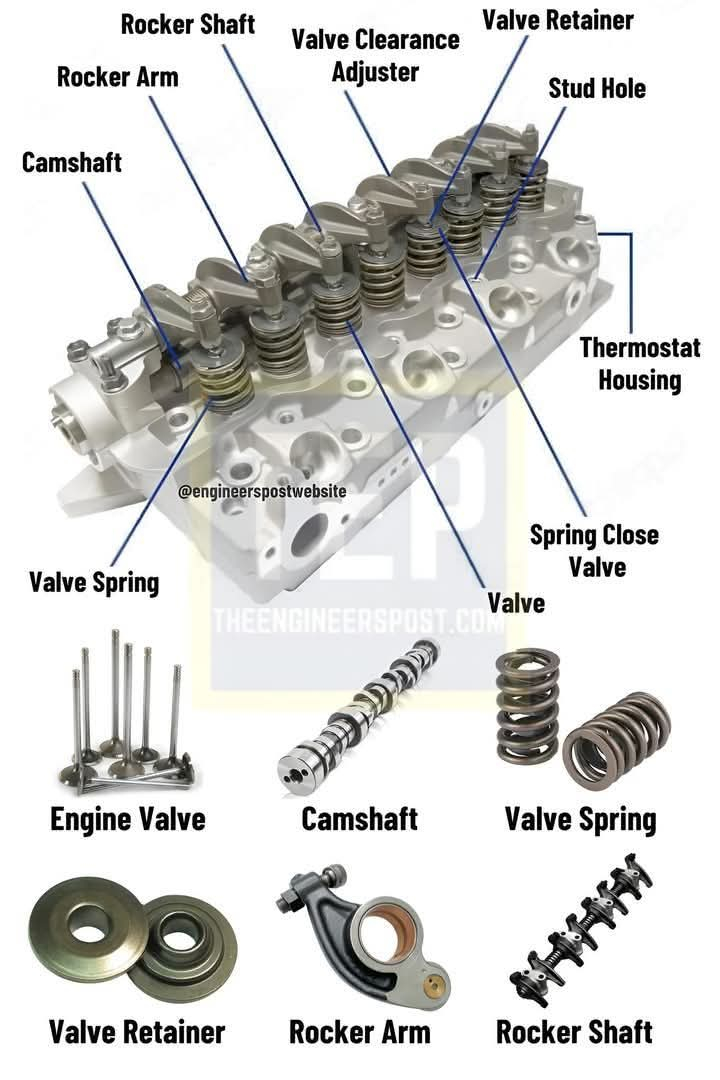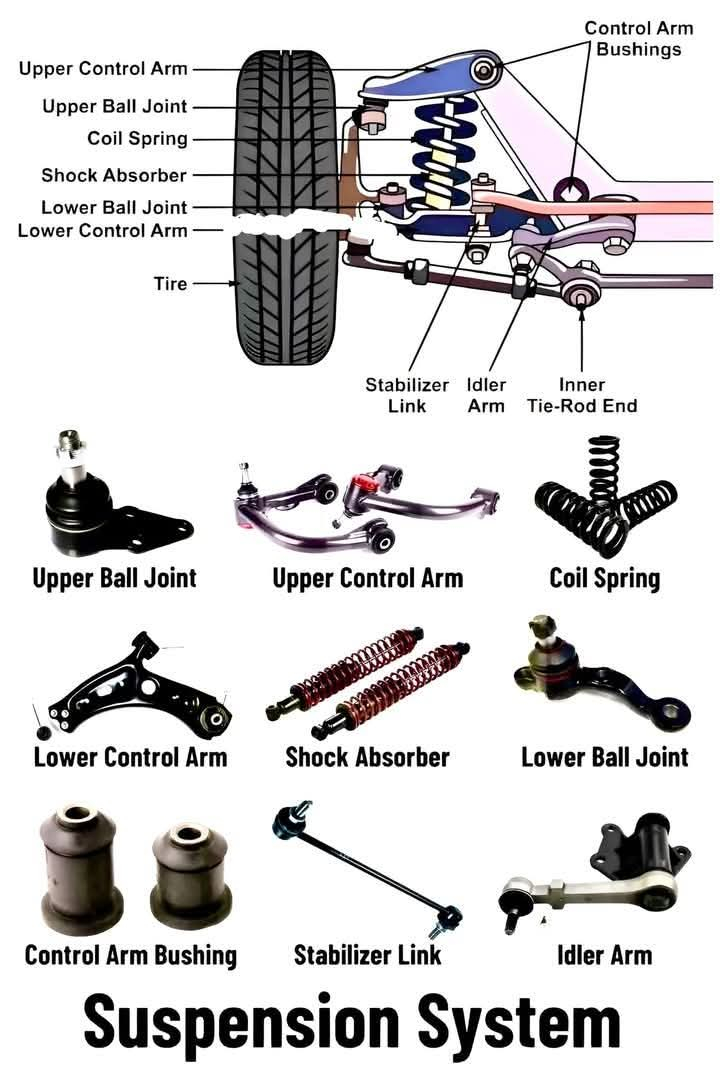Following is the 11 Different Components of Suspension System:
The suspension system of a vehicle plays a crucial role in ensuring comfort, stability, and handling. It connects the vehicle's body to the wheels, allowing it to absorb shocks and maintain tire contact with the road. Key components include:
1. Upper Control Arm: This component connects the vehicle frame to the suspension and allows vertical movement of the wheel. It helps control wheel alignment and steering.
2. Upper Ball Joint: A spherical bearing that connects the upper control arm to the steering knuckle, enabling the wheel to move up and down while turning.
3. Coil Spring: A spring that absorbs shocks and supports the weight of the vehicle. It compresses and expands to keep the wheels in contact with the road.
4. Shock Absorber: This component dampens the oscillations caused by the springs' compression and rebound, providing a smooth ride by reducing bounce and sway.
5. Lower Ball Joint: Similar to the upper ball joint, it connects the lower control arm to the steering knuckle and allows the wheel to move while maintaining alignment.
6. Lower Control Arm: It connects the vehicle frame to the wheel assembly and supports the suspension's vertical movement.
7. Tire: The contact point between the vehicle and the road, providing traction and cushioning.
8. Control Arm Bushing: Rubber or polyurethane components that provide flexibility, reduce vibration, and absorb shock between the control arm and the vehicle frame.
9. Stabilizer (Sway Bar): A metal bar that helps reduce body roll during turns, stabilizing the vehicle by connecting the left and right sides of the suspension.
10. Idler Arm: Part of the steering system, it supports the steering linkage and allows the steering wheel to turn smoothly.
11. Inner Tie Rod End: The component that connects the steering rack to the outer tie rod, enabling the wheels to turn when the steering wheel is rotated.
Following is the 11 Different Components of Suspension System:
The suspension system of a vehicle plays a crucial role in ensuring comfort, stability, and handling. It connects the vehicle's body to the wheels, allowing it to absorb shocks and maintain tire contact with the road. Key components include:
1. Upper Control Arm: This component connects the vehicle frame to the suspension and allows vertical movement of the wheel. It helps control wheel alignment and steering.
2. Upper Ball Joint: A spherical bearing that connects the upper control arm to the steering knuckle, enabling the wheel to move up and down while turning.
3. Coil Spring: A spring that absorbs shocks and supports the weight of the vehicle. It compresses and expands to keep the wheels in contact with the road.
4. Shock Absorber: This component dampens the oscillations caused by the springs' compression and rebound, providing a smooth ride by reducing bounce and sway.
5. Lower Ball Joint: Similar to the upper ball joint, it connects the lower control arm to the steering knuckle and allows the wheel to move while maintaining alignment.
6. Lower Control Arm: It connects the vehicle frame to the wheel assembly and supports the suspension's vertical movement.
7. Tire: The contact point between the vehicle and the road, providing traction and cushioning.
8. Control Arm Bushing: Rubber or polyurethane components that provide flexibility, reduce vibration, and absorb shock between the control arm and the vehicle frame.
9. Stabilizer (Sway Bar): A metal bar that helps reduce body roll during turns, stabilizing the vehicle by connecting the left and right sides of the suspension.
10. Idler Arm: Part of the steering system, it supports the steering linkage and allows the steering wheel to turn smoothly.
11. Inner Tie Rod End: The component that connects the steering rack to the outer tie rod, enabling the wheels to turn when the steering wheel is rotated.



